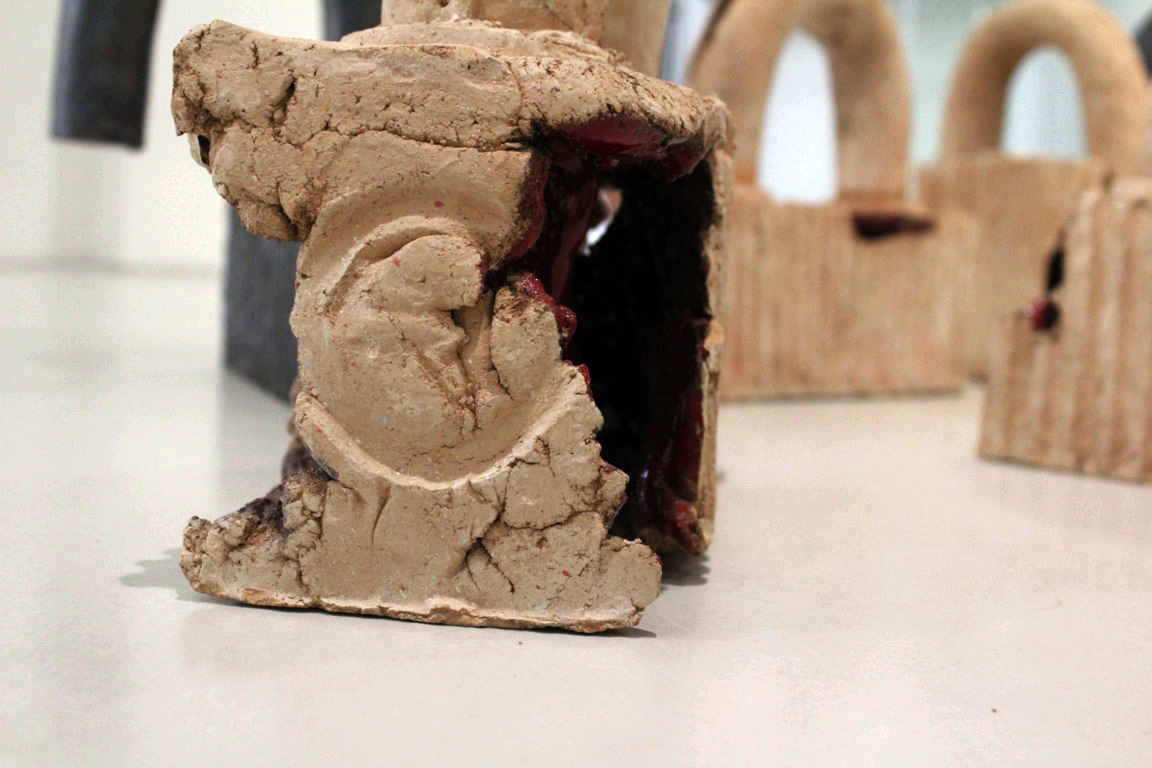With this work I think I reflect on myself as an artist who works with material, you know, my work being material-driven, medium-driven. And when I think about clay, one of the things that I wanted to explore here was this idea of fragility, the fact that it’s very strong but it breaks very easily. At the point that I made this I was thinking of the issue of security that is besieging the whole world now, and I wanted to see how clay could be used to express or study it.
I think that, to me, it was part of the path that I have travelled. The time that I made them I was more or less being introduced to the year of the digital, especially thru the computer, cell phone technology and other electronic media. For instance the “River” that I made, “Digital River” and “Digital Waterfall”, reflect the idea of breaking things down into smaller relatable components, so that they are capable of being re-arranged or permed into other formats which still relate toothier origins. Works like the “Digital River”, for instance, or the “Digital Waterfall”, could be reconfigured in so many ways that make them much more dynamic, as an idea, and not just one idea. I don’t want to have a piece which is fixed, and is one particular format throughout, but is capable of being manipulated reworked into something new.

One of El Anatsui’s ceramic padlocks
That’s the whole idea, one’s concept and ideas move around and, one should find a way of making them look like real art. Art shouldn’t be boring, it should be something that challenges and moves through time and which is able to reflect the different times as well.
Today? If I should work on the theme of security for instance, I might have a different way of looking at it. probably explore the fact that most culinary utensils are made with clay to look at something like ‘food security’.
Considered today the most important African artist active on the continent, El Anatsui has brought African history, culture and art all over the world. Born in Ghana in 1944, he now lives and works between Ghana and Nigeria. In Nigeria, in 2011, he ended his long career as a university professor, teaching Sculpture at the Department of Applied Arts of the University of Nigeria, in Nsukka. He received many prizes over the course of his career, the most recent being the Praemium Imperiale in 2017, the World Prize for Culture in memory of His Imperial Majesty Prince Takamatsu, organized annually by the Japan Art Association. The prize is so important it is considered as the Nobel Prize equivalent in the art world, and marks an important milestone for the artist, who became the first Ghanaian in history to receive this recognition. Not to be overlooked also is the Golden Lion prize awarded to him in 2015, during the Venice Art Biennale. Since 1980 the works of this great African artist have been exhibited all over the world, with his first exhibition in Cummington, in the United States. Since then his works have traveled to all 5 continents. Today his works are displayed in some of the most important international museums, including the British Museum in London, the Center Pompidou in Paris, the De Young Museum in San Francisco, the Metropolitan Museum of Art in New York and the Osaka Foundation of Culture in Osaka.